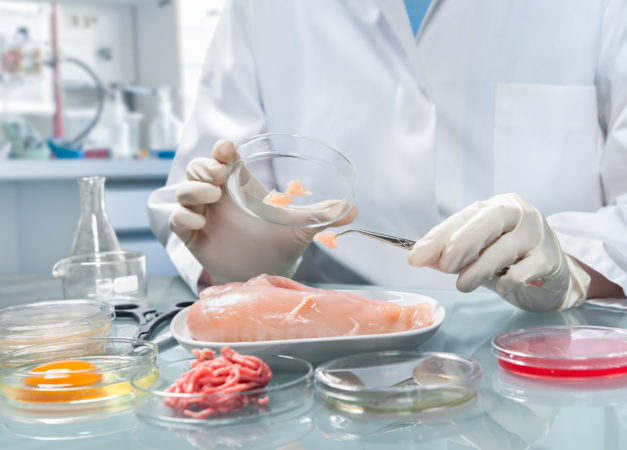Lab grown meat is also known as cultivated meat, cultured meat, and cell based meat. Sometimes it’s even called clean meat, although the accuracy of that term is debatable given current production methods. In this series of articles from Go Natural Education, we’ll use the term synthetic alternative protein and the acronym SAP. Then we’ll leave it up to you to decide whether SAP is truly meat at all..
The Challenge of a Definition
But what is this edible substance anyway? If you’re confused, you’re not alone. After all, there isn’t a universally agreed-upon definition. In a recent article, National Geographic shared a few possibilities.
- David Kaplan, Director of Tufts University Center for Cellular Agriculture, describes lab grown meat as “taking cells that normally produce meat and using those cells as the powerhouse to grow the meat outside of the animal.”
- Clair Bomkamp, lead scientist for cultivated meat and seafood at the Good Food Institute, describes it as “The same thing as traditional meat . . . (but with) the animal taken out of the equation.”
- The Humane League, an international animal protection organization, claims that “it has the exact same animal cells as what we traditionally consider ‘meat’ . . . The difference has to do with how it gets to your plate.”
Advocates and Opponents
Of course, not everyone agrees with these descriptions or supports lab grown meat at all. Julien Denormandie, the Food and Agricultural Minister of France, is clearly not an advocate. “Meat comes from life, not from laboratories,” he says. “Count on me that in France, meat remains natural and not artificial”. In the United States, however, the FDA recently approved chicken made from cultured cells.
Although the taste and smell of SAP are reportedly indistinguishable from “real” or “traditional” meat, it’s difficult to replicate the texture, which is created by muscle fibers, connective tissues, and fat. That may change, however, so keep that in mind if you’re ready to formulate your own definition. Before you do, however, let’s look at how SAP is made. Cleanrooms and regulations are the focus of our next article.

